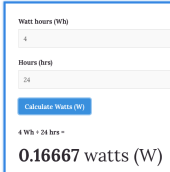I have installed a Schneider XW Pro Inverter with their MPPT 100 600 charger and Lithium Smart batteries. I have the latest firmware. The unit works great from a performance point of view, seems quite efficient based upon heat it dissipates and is incredible at handling surges! I have a 6 HP 240 V compressor and it starts it without the slightest hesitation. However, I am also selling to the grid. I wanted to do their Enhanced Grid Support. Meaning… keep batteries charged, use the power from the PV to run the house and sell any extra to the grid. I scoured the documents and the WEB and could not get information for it to work properly… meaning: It would only sell to the grid at the rate of the “max sell amps”! The impact of which was to discharge the battery at a high rate until the batter SOC (or voltage.. depending on mode) would be reached and then it would stop using energy from the PV, the house would be fed from the grid, the battery would then be recharged to above the SOC limit and then the cycle would start all over again! Constant large current cycling of the battery about every 55 seconds.
I called technical support multiple times and all they gave me was the manual information and said it should work… but it did not.
In searching the WEB, I found multiple people encountered this problem but no one including Schneider had a solution! Well, I stumbled upon the solution… They say that the Grid Support voltage should be set to 64 Volts in order to enable the Enhanced mode. That does not work. I have verified this on my system and the exact system of a friend of mine (we bought same equip. at the same time).
The answer is to run it in the SOC mode but have the Grid Support voltage at the float voltage of the charge controller! Then it works beautifully!!! Just a note: the charger settings on the MPPT must be the same values as on the Inverter.
I wasted about 25 hours with this issue and Schneider was no help at all. I believe that at this point I understand the system better than their technical support people.
If any of you struggled with the same issue… I hope this will help you!
I called technical support multiple times and all they gave me was the manual information and said it should work… but it did not.
In searching the WEB, I found multiple people encountered this problem but no one including Schneider had a solution! Well, I stumbled upon the solution… They say that the Grid Support voltage should be set to 64 Volts in order to enable the Enhanced mode. That does not work. I have verified this on my system and the exact system of a friend of mine (we bought same equip. at the same time).
The answer is to run it in the SOC mode but have the Grid Support voltage at the float voltage of the charge controller! Then it works beautifully!!! Just a note: the charger settings on the MPPT must be the same values as on the Inverter.
I wasted about 25 hours with this issue and Schneider was no help at all. I believe that at this point I understand the system better than their technical support people.
If any of you struggled with the same issue… I hope this will help you!






